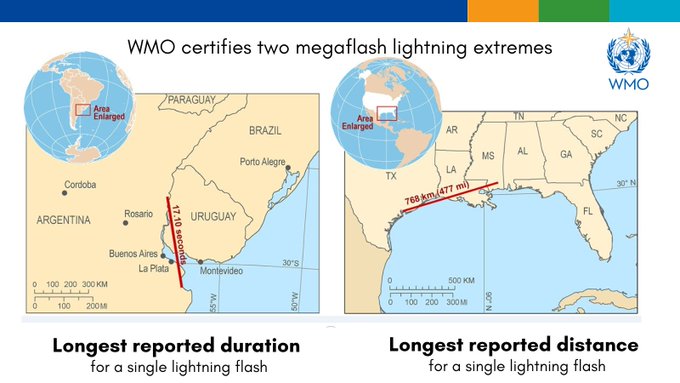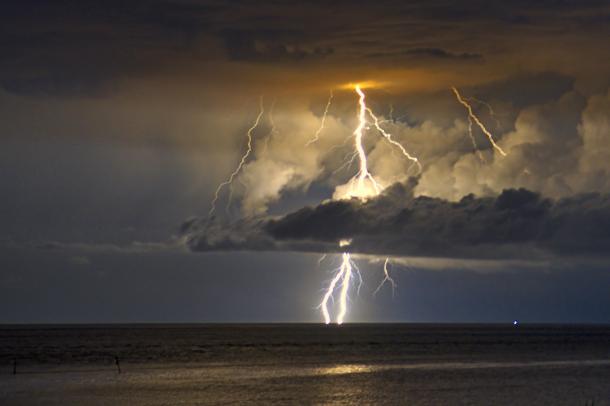A bolt of lightning that stretched more than 750 kilometres has set a record for the longest flash ever recorded.

The World Meteorological Organization (WMO) said the single flash was recorded during a U.S. storm in April 2020, and that the bolt was so long it stretched over three states – Texas, Louisiana and Mississippi.
The new record zaps the previous one, which was set in Brazil in 2018, by 60 kilometres.
Another record was also set in the same year – the WMO confirmed a flash of lightning over Uruguay and Argentina that lasted more than 17 seconds.
According to atmospheric scientist Michael Peterson, these long-spanning, long-lasting bolts are a relatively new discovery, thanks to satellite mapping technology that’s orbiting the Earth.

Get daily National news
“Some lightning flashes — we call them megaflashes — actually propagate for incredibly long horizontal distances, sometimes for hundreds of kilometers,” Peterson told NASA’s Earth Observatory blog, explaining that there is often much more lighting happening overhead during a storm than we think.
Normally lightning doesn’t stretch farther than a few kilometres and lasts less than a second, said Arizona State University’s Randall Cerveny, who is the chief of records confirmation for the meteorological organization.
“These two lightning flash records are absolutely extraordinary,” Cerveny told the Associated Press.
He did say, however, that both records occurred in regions of the world that are prone to intense storms that can cause megaflashes – namely, the Great Plains in North America, and the La Plata basin in South America.

The WMO highlighted that the record flashes were not isolated events – they both happened during intense, large-scale storms. They also confirmed that records aren’t linked to climate change and both occurred so high up in the sky that neither flash posed a risk to humans.
However, the organization says that lightning storms should always be taken seriously.
“Lightning is a major hazard that claims many lives every year,” WMO chief Petteri Taalas said in a statement.
“The findings highlight important public lightning safety concerns for electrified clouds where flashes can travel extremely large distances,” he continued.
The WMO says the only lightning-safe locations are big buildings that contain wiring and plumbing, or fully enclosed, metal-topped vehicles.







Comments